Summit '19 is over, don't miss Summit '20
Web Directions Summit returns November 2020 in Sydney.
Sign up to be the first to learn about program and secure tickets at the best possible prices.
A conference for the whole team
We increasingly work in agile, cross functional teams. So why should professional development be siloed?
Web Directions Summit is designed for the modern product landscape. It's a one-of-a-kind conference designed for the needs of your entire product team, with three carefully curated tracks–one focused on front end development and engineering, one focused on design, one focussed on product–each bringing together the finest minds in their fields, in an environment designed to ensure you and your team get the most from attending.
Who's it for?
The Product Design Team
Product, UX, IxD, visual, Web, Front End and CX experts, Art Directors, Creative Directors, Experience Leads, Design Leads and Design Researchers should all attend to hear from world leading experts.
The Engineering Team
We've got the whole front end development team covered: front end engineers, JavaScript and Web developers, engineering leads, engineering managers, devops experts, CTOs.
The Product Team
Product Managers and Owners, VPs of Product and CPOs–there's now a track specifically dedicated to the challenges you face at each step of the product life cycle, from ideation to validation, delivery, onboarding and growth.
Leaders and Decision Makers
To round it out, our audience is full of smart decision makers, who know taking the pulse of what's now, and next, is vital in making the right strategic decisions. Three tracks, and a mixture of deep dive and high level sessions ensure there's something for you too. Meanwhile, outside the sessions, you'll find engaging showcases of technology and design to keep you thinking.
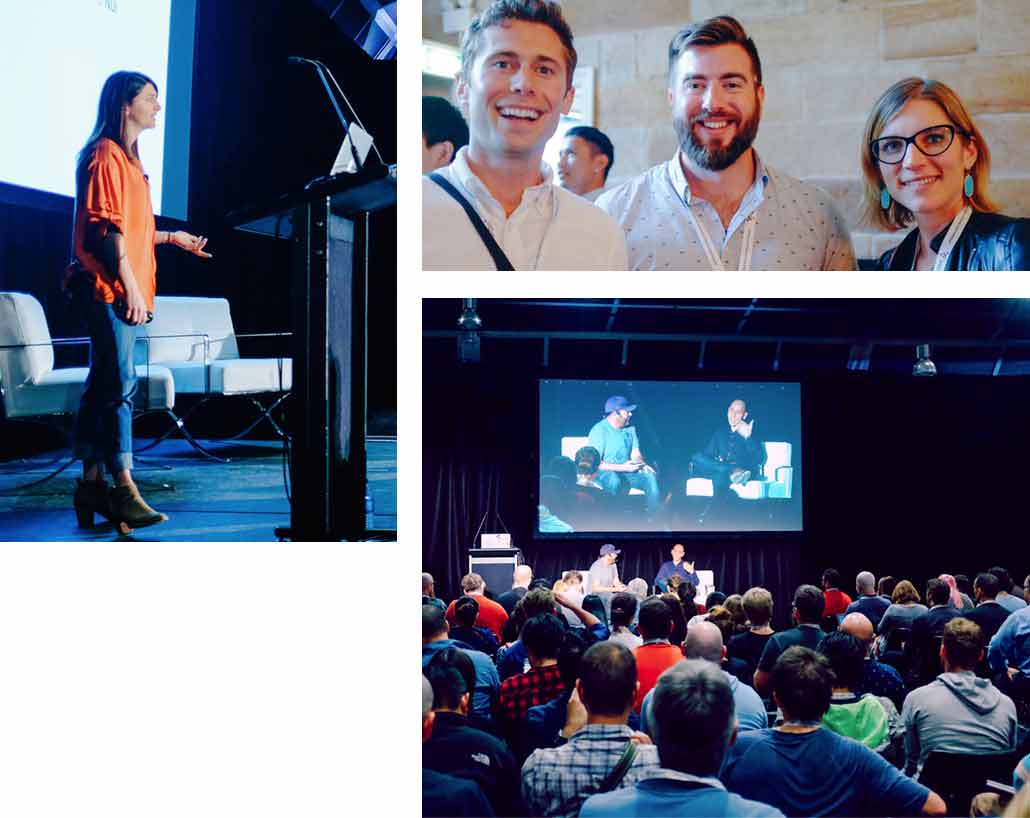
- 800+ Passionate attendees
- 46 Transformational speakers
- 2 Intense Days
Three huge tracks
Web Directions Summit features nearly 4 dozen speakers, across three tracks, Product Design, Product Leadership, and Front End Development.
Keynotes
begin and end each day with big ideas from world leaders:

Aaron Z Lewis Cyber Designer
Metaphors we believe by: the pantheon of 2019
It’S 2013, and I'm lounging on the hardwood floor of my childhood bedroom with a blasphemous book that I smuggled home from college: Sam Harris’ Letter to a Christian Nation. I devour the whole thing in a single sitting. It feels like Harris is letting me in on a giant secret, a Big Truth that my very Christian upbringing had kept hidden from me. God is dead, he says. We killed him a few hundred years ago and replaced him with a sophisticated scientific understanding of life, the universe, and everything.
Fast-forward six years, and I’ve started to realize that the God vs. science situation is a bit more complicated than Sam Harris led me to believe. The more I learn, the more I suspect that rationalists only managed to kill a very narrow and anthropomorphic conception of God. People who study complex systems started using new words to talk about god-like phenomena — metaphors that are more palatable to secular minds. I believe these new words can help scientifically-minded people better understand what it actually felt like to believe in God before science became a Thing. Let’s take a tour through the pantheon of 2019 and explore what these seven “gods” might teach us in our era of ecological crisis and post-truth confusion.
Read More

Nina Walia Experience Design Lead Google Hardware
Responsive (Clothing) Design
Conductive threads allow us to weave the web and interaction right into our garments. This creates new opportunities for expression and the socialization of technology, reducing the screens between people and the world, and allowing us to be more present where we are.
Thus far such work has had to be done on a couture (by hand, one-off) basis but technological advancements promise enabling a new future by integrating such capabilities into the textile manufacturing process, producing interactive garments at scale. In this talk Nina Walia will share design considerations from her extensive experience, including personal principles she follows, initial learnings about interaction, and how dynamics about who is involved affects design.
Read More

Mark Pesce futurist, author, entrepreneur and innovator
New Money–an in-depth panel
A panel on the current and emerging trends in digital money.
Read More

Gretchen Anderson Product Design Consultant
Designing smart things: Balancing ethics and choice
Front End Development
JavaScript, CSS, Browser APIs, security, performance, everything for the font end engineer

Patrick Meenan Software Engineer Facebook
Getting up to speed with Web Performance in 2019
Not too long ago, improving web site performance was a relatively straightforward task. A bit of gzipping here, some concatenation there, judicious use of image compression, and hey presto, faster sites.
But as the complexity of what we build has increased significantly, the number and size of the assets we deliver has exploded, our job in ensuring highly performant sites and applications is increasingly complex.
So who better to help us navigate the most recent developments in web performance than the creator of WebPageTest, Patrick Meenan. In this session, Patrick will explore different ways to measure the "user experience", what the newer metrics like Time To Interactive mean and how best to detect and analyze performance issues.
Read More

Sara Soueidan Front End Developer
Accessibility: Small Steps for a larger Audience

Bear Douglas Director, Developer Relations Slack
Intuitive APIs and Developer Education
API standards, from SOAP to REST to GraphQL, have evolved to meet the needs of API providers and developer consumers. They make APIs "intuitive" by making them predictable. When product designs bump up against the constraints of standards, you can choose to force a fit or break from convention and invest in educating developers about your choices.
Through case studies (incl. Facebook's Open Graph, Slack's workspace apps project) we'll examine the tradeoffs, consequences, and some learnings about how to get your developer community to come along with you.
Read More

Peter Wilson Senior Engineer Nine Publishing
HTTP2: The reckoning
A few years ago, HTTP2 was the hot new technology that was going to solve all of the web’s performance woes. But like a bad 80s movie sequel, the promise turned out to be a little better than the reality.
So what went wrong? In this talk, Peter will dig in to the data to find out if it’s the technology or developers filling the space provided. Now that HTTP2 is an established technology, learn how to take advantage of the features it provides within the confines of reality.
Read More

Lachlan Hunt Senior Developer Atlassian
Random
Have you ever wondered how Math.random() works? Or how an inherently deterministic system can produce random numbers at all?
Lachlan takes a deep dive into the world of randomness, and reveals the mystery surrounding this widely used, but little understood, utility function in JavaScript. He'll deconstruct the underlying algorithms and demonstrate just how predictable its output can be, and explain how different types of randomness can be used for solving different types of problems.
Read More

Tim Holt Front end developer ABC
Adapting a component library for better adoption
Developing a UI component library for a large organisation with many different products is a challenging endeavour. A good system will strike the right balance between consistency and flexibility and will afford developers efficiency and quality. These are characteristics difficult to get right up front.
At the ABC, we are continually iterating our component library to improve a key measure of success: adoption. We want teams to want to use it! This talk will discuss some of the challenges we’ve faced, how we approach trying to find the right level of component granularity and cover some illustrative examples of the changes we’ve made to get more developers of ABC digital products on board.
Read More

Rhiana Heath Front end Ruby on Rails Developer Blake eLearning
Things you can do with CSS that used to need JS
CSS has come a long way in recent years, bringing style and interaction to the web. For example just look at all the cool things you can do now with CSS animations!
However there are some common components that people are still reaching to JS to solve when they can achieve the same thing with CSS. Things like: Modals, tooltips, mobile menus, accordions and carousels.
What if I told you that each of these can now be done with CSS alone? That way the functionality renders at the same time as the design and makes it usable by more people.
Read More

Ben Teese Software Developer Shine Solutions
GraphQL and The Web: Thinking beyond the technology
You’ve probably heard of GraphQL by now, and maybe even learnt a bit about the nuts and bolts of how it works. However, as a dyed-in-the-wool web developer, you might be a little unsure about whether it can be of benefit to you or not. Is it really a good idea to move away from standards like REST, which we’ve come to know and love?
In this talk, rather than drilling into GraphQL, we’ll try stepping back and looking at the bigger picture. I’ll start by examining how the evolution of web development has led to a growing schism between ‘back-end’ and ‘front-end’ development, and how REST can sometimes exacerbate this problem. Next, I’ll argue why, for the sake of our users, web-developers shouldn’t just consider themselves to be 'front-end' developers, and instead need to take ownership of at least part of their backend too. Then I’ll show how, by accepting this, web developers can see GraphQL as not so much just a technology, but as a tool that empowers them to take back control of their destinies.
REST is not going away any time soon. However, I believe it has contributed - at least in part - to a wall between front-end and back-end developers, which is slowing us all down. Attendees to this talk will learn that, whilst GraphQL won’t be the answer to all of our problems, it may well be the thing that helps us break down the wall, move faster, and produce truly delightful web applications for our users.
Read More

Steve Morris Senior Consultant, Developer ThoughtWorks
SOLID JavaScript
While the web's been around 30 years, and JavaScript more than 20, it's only in relatively recent years we've been using JavaScript, and other web technologies to build complex, sophisticated applications.
But the discipline of Software Engineering has been grappling with this challenge for well over half a century, and we Front End Developers can learn a great deal from the patterns and practice that have emerged from that discipline.
In this presentation we'll focus on SOLID, an approach to object oriented programming that emphasises 5 principles for building more understandable, flexible and maintainable apps, and how we can apply these principles to developing for the web.
Read More

Mandy Kerr Front End Developer & Development Manager Seven West Media (WA)
Fun with Sensors and Browser APIs for the web!
Developments in Sensor & Browser Apis has opened up many opportunities for your website to react and respond based on the users device, environment or input. As of right now there are many great Sensor & Browser APIs that you can take advantage of including Light Sensors, Gyroscopes and Audio and because these APIs are all available in more devices than you would think they are more accessible than ever.
In this presentation we’ll look at some of my favourite features and examples, like how we can improve the visual representation of our conversational UIs using web audio and speech apis, or how we can change the user interface based on the ambient light detected in the users environment. We’ll explore the the possibilities, tools and resources so you can get started creating engaging and creative effects, visualisations and experiences in your projects tomorrow.
Read More

Gilmore Davidson Senior Developer InnoWell
Intl we meet again
A truly global application will need to support many different languages and cultures. Translating static text is the primary concern, but what about more dynamic content? There are numerous formatting differences around the world for dates, numbers, currencies, and more — even between cultures using the same base language.
Translating this dynamic content on the web has traditionally involved specialised libraries with reams of formatting data, all of which needs to be loaded over the network. But today’s browsers are providing ever more in-built formatting options via the Intl.* APIs. This talk will give you an overview of what they do, and how you can support a wide array of locales without adding Yet Another Library to your stack.
Read More

Ryan Seddon Front-end Architect Zendesk
Machine learning in the browser
Machine learning has really come of age thanks to ever increasing compute power and access to troves of data, what if we could respect the privacy of the users and run it on their device without sending data to a central server. Introducing tensorflow.js a JavaScript implementation of the very popular ML library from google, you can run it in inference mode or even train a model if you'd like.
In this talk we'll explore what's currently possible and some potential use cases.
Read More

Ben Dechrai Technical Evangelist Auth0
My voice is my passport. Verify me?
Security is hard. Using the same password for everything is easy.
Over the years, we've made it easier for users to do ths right thing, from email-based verification to one-time passwords via email and security tokens. But nearly all these solutions require you to have your mobile phone, or security device with you. And if you're overseas, you might have additional problems.
Let's look at mechanisms for biometric authentication with web applications. There are a few out here, and this talk will help you understand the options and implementation, together with a live demo.
Biometric security? Because you rarely leave your face and voice at home!
Read More

Charlie Gerard Front-end developer Atlassian
Strike a pose - Gesture recognition in JavaScript with Machine Learning & Arduino.
Most of our interactions with technology aren’t really intuitive. We’ve had to adapt to it by learning to type, swipe, execute specific voice commands, etc… but what if we could train technology to adapt to us?
Programming for hardware in JavaScript has already been made accessible with frameworks like Johnny-five, but, combining it with machine learning, we have the opportunity to create new and smarter interactions.
In this presentation, I will talk about how to build a simple gesture recognition system using JavaScript, Arduino and Machine learning.
Read More
Design
Product Design, UX, IxD, DesignOps, research, scaling design, design leadership

Inayaili de León Senior Designer Microsoft
Humans vs Design at Scale
Scaling design teams is the super power we all wish we had. We define processes, create tools, and invest in systems, confident that we'll be able to replicate high quality experiences and products at scale. But it's humans all the way down, so how can we make sure we are you looking after our humans in the process of organizing, automating, and systematizing our teams? How can we develop processes that center on the people whose day-to-day practices they affect, at the same time that we make strides toward efficiency, speed, and scalability?
Read More

Sarah Federman Sr Frontend Developer Atlassian
Customizability in Design Systems

Aaron Tan User Experience Design Lead
Maturing Design Culture in an Organisation
Design culture is about rediscovering the human side of business. UX Design is becoming an increasingly valued part of all kinds of organisations, although there are still pockets of resistance.
So how do we manage design in organisations to achieve their full potential? Better UX design maturity makes an organisation more competitive and more effective at delivering great products and services. This talk goes through case studies from years of leading product development — both successful and not — to show that investing in design culture will help an organisation achieve greatness.
Read More

Alexandra Skougarevskaya Design Manager Atlassian
Design systems are a service: how to keep your customers happy
At Atlassian in the Design Systems team, we've started thinking about the design system we build and maintain as a service. But who are the consumers of this service? And what do they want (and need).
In this presentation, I'll look at how we dig deeply into who the consumers of our systems are, and some of the things we've done (some that worked, others that didn't) in meeting their needs.
Read More

Benson Low & Brigette Metzler UX Research Manager, Senior User Researcher REA Group, Australian Government
Operationalising Research - How Research Ops can help

Katja Forbes Managing Director, Australia & New Zealand Designit
Designing for Trust
There are many examples of how invisibility in society is increasing. More and more is happening behind the scenes: data generation, algorithmic computation, and decision-making. It’s becoming harder to grasp the wider effects of individual and corporate actions based on things that are invisible to us. At the same time, the level of trust in society is decreasing.
Fake-news and scandals of companies that misuse data hits us every day.
What is fake and what is true? And who should we trust?
Because trust is essential: Human interactions, relationships and systems are all based on trust.
Every day, we put our trust into people, organisations and services.It’s fundamental to our communication - a vital currency.Fictional entities like brands, communities, democracy and trade only exists if we all trust them.
We need to design for trust.
This session explores how we can design for trust in the things that we can't see. Trusting Invisibility!
Read More

Serena Chen Product Designer
Design for Security
Today, the internet owns our lives. Every website and app we touch knows us: our personal information, our inane ramblings, our deepest secrets. Security has never been more crucial, yet it’s a rare topic outside of ISM teams and hackers. And through the design lens, it’s completely missing.
Good user experience design is necessary for good security. We can craft paths of least resistance that match paths of most security. We can educate our users on what is good practice and what is security theater. We can build secure flows that are usable, not obstructive or annoying.
Read More

Kevin Wilkins CX Practice Lead Tquila ANZ
Rock Star Research
- How can you conduct relevant and usable research
- Unearth invaluable insights in unusual situations
- Challenge predictable research processes
Kevin Wilkins, CX Practice Lead at Tquila ANZ will share lessons learned from a decade's experience managing user research and product owners needs.
Read More

Shane Morris User Experience Designer and Coach Automatic Studio
Story-based design
After many long hours of analysis you've finally distilled your weeks of customer research findings into a fine and beautifully presented set of personas. Look at them there up there on the wall! Alka, Brianna, Charlie... So succinct! So well photographed!But then they JUST SIT THERE, and don't DO anything!
When we design new products we are designing for new behaviours. So let's get your personas up on their feet and DOING THINGS - by making them the heroes of your design stories.
Design stories, or scenarios, are 'day in the life' descriptions of how your new product will fit into the lives of your users and customers. They help crystallise and communicate your product vision and capture key design constraints in ways that personas can't. Let's talk about how stories can bring your personas to life and kick start your design process.
Read More

Alison Cooke & Lauren Max Senior Experience Designer, Experience Design Lead NAB, SportsBet
Don't go changin': The importance of onboarding your users through change
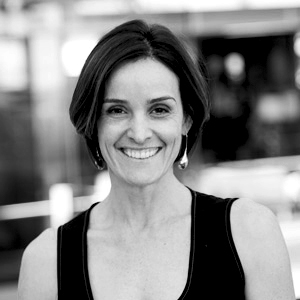
Larissa Azevedo Vice President of Product & Design Hipages
Bringing Design, Product and Data Scientist together to design intelligent product
In the ever-evolving Digital World, machine learning is significantly changing the way we approach design and digital experiences.
This talk will explore how our Design and Product Development practices are changing through collaboration with data scientists to harvest the potential of big data and using it to improve experiences through prediction and personalisation.
It will cover process enhancements, and frameworks that are guiding our practise changes.
Read More

Amy Cleary Senior Practitioner Symplicit
Principles of Conversation-led UI
“Conversation Design” is the new frontier in UX right now, but what exactly does it mean? What have we learnt so far? And what are our UX challenges as we design and adapt user interfaces to be led by conversational interactions?
Amy Cleary will outline some key principles in Conversation Design, drawn from her own experience researching and designing start-up to enterprise level chatbots, as well as from reviewing conventional research in the field.
Read More

Sheree Hannah Freelance Product Design Lead
Creativity and user needs: pushing beyond the obvious solution
As designers we all want to do our best work, but somewhere between the methodologies, reviews, best practice and stakeholder management, we settle for a solution that’s good enough. This talk delves into the often rushed or neglected step of utilising user insights alongside creative thinking.
Read More

Oliver Maruda Innovation Lead Arq Group
Designing the modern call center
At Qantas, like many Australian companies, they're are constantly looking for ways to allow customers to better self-serve their experience in their channel of choice. As part of a multi-year strategy focused on reducing long wait queues on the phone and empowering customers to solve all their queries in minimal time - we've helped design and develop a new way for customers to have a conversation with the most iconic Australian brand.
This isn't just about building a basic chatbot or removing customer agents from the funnel. Oliver Maruda, Innovation Lead at Arq Group will take you through the steps and challenges in solving some of the most complex problems using AI, ensuring accuracy at scale, but most importantly, help you get started on a path of how you too can enable your brand to start having real conversations with your customers utilizing AI and handover to humans when appropriate.
Read More
Product
Ideation, validation, delivery, onboarding and growth, communication and leadership–everything the modern product professional needs to succeed.
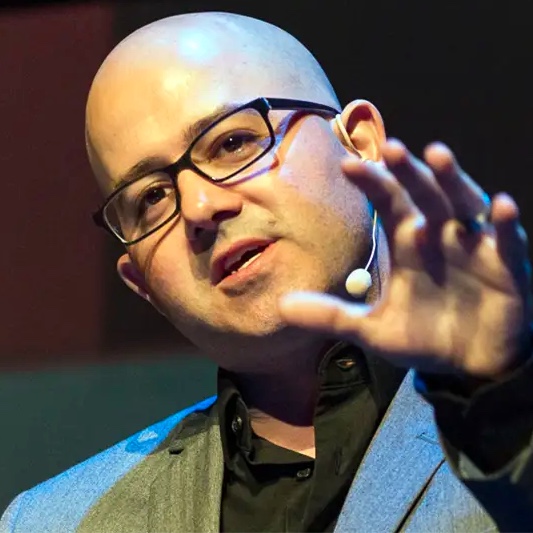
Jonathon Colman UX content design lead Intercom
A content-first approach to product onboarding
Knowing your user’s story is central to a great onboarding experience – but how do you actually tell that story?
At some point you need to write the content of your onboarding: words, sentences, value props, the works. Ultimately, it’s the content that helps your users achieve their goals.That’s a lot of heavy lifting for just a few bits of text. As it turns out, writing your onboarding is a real job, and it’s often harder than you might think. The hardest part of all is figuring out where to start.
In this presentation, Jonathon Colman shares an approach and a few tools that make it easier to write a great onboarding experience.
Read More

Andrew Gregovic Senior Software Development Manager Paypal
2-speed approach for building right software products right
Agile is awesome for startups who need to get the idea out to the market ASAP, get feedback and try to survive in the meanwhile.
On the other hand, large organisations with very mature products/platforms simply cannot employ pure agile, hence they fall back on waterfall or hybrid models. But there's another way - a 2-speed mode of building rapid, throwaway prototypes (to determine the *right* product) and then afterwards build them *right* if they prove to be viable. I'll also cover some useful experimentation techniques to support the process.
Read More

Sten Pittet Co-founder & CEO Tability
The 4 stages of outcome-driven teams
OKRs are on the rise, but too many teams are still rushing their implementation before the team is ready. Switching from producing deliverables to delivering value takes time, and there are significant cultural changes that need to happen first.
In this talk, Sten will introduce a simple 4-stage maturity model for outcome-driven teams, and show how you can grow your goal-setting muscle to move up the ladder.
Read More

Jenny Chu Product Manager Atlassian
Getting Your Team to Think like a Product Manager
As Product Managers, it is arguable that we have one of the most critical roles in building a shared understanding of the problem so that our team can build world-class products. But, we know it’s a lot easier said than done. Scaling product management thinking within your team enables you, as a product manager, to focus on the complex, hairy questions, like the long-term vision of the product as your team becomes empowered to make good, product decisions on their own.
This talk addresses the benefits of getting your team to think like a product manager (for both you and your team!) and practical exercises on how to build that product muscle within your team.
Read More

Cheryl Gledhill Head of Product BlueChilli
Turning insights into product
As a head of product for an accelerator / incubator Cheryl works with several startups every 3 months, taking them from napkin sketch to "product market fit" using lean startup methodologies.
Here Cheryl will talk about how to find the seeds of insight and how to turn that into product.
Read More

Laura Van Doore Head of Product Design Fathom
The Pragmatic Product Professional
In 1999 a now infamous book called The Pragmatic Programmer was first published, and the mindset it introduced took the software development world by storm. After 20 years, a flick through the pages shows it’s filled with timeless advice that, with a little bit of examination and re-interpretation, can help anyone nurture a pragmatic product mindset.
Pragmatic product people are early adopters & fast adapters. They are inquisitive, critical thinkers and Realistic. The quintessential Jack-of-all-trades.We’ll explore the essential traits of a pragmatic product person, re-interpret the practical learnings from the book into a modern product context, discover many insightful parables along the way, and learn how we can approach all angles of modern product development with a pragmatic mindset to improve the way we work with our teams to build amazing products.
This presentation will be an enjoyable & compelling journey on how software programming techniques that were written 20 years ago, can be seamlessly applied to modern product design practices in organisations today.
Read More

Nicole Brolan Chief Product Officer, ANZ SEEK
OKRs, the good, the bad and the ugly
Nicole Brolan, Chief Product Officer, ANZ SEEK will consider the good, the bad and the ugly of OKRs, drawing on her experience of 18 months of embedding them in their products at SEEK. What’s worked well? What hasn’t worked too well – what unintended impacts have occurred? What would they change? It’s a real warts and all story with lots of real world example, aimed at helping you learn from SEEK and improve their process or help your thinking if you are keen to embark on the OKR journey.
Read More

Anna Lee Anda UX Researcher Zendesk
Minimising bias to create a well rounded product
From the outset of a project there are risks that you end up designing for particular or the wrong customers rather than the right ones. In this talk I will be covering ways at Zendesk we minimise bias to to ensure teams have full context of the problem space and the users.
More often than not organisations don’t have a dedicated UX Researcher or there is not one available for every scrum team. Nonetheless, it is helpful to learn about your users in these practical and lightweight ways so that your products are well informed and have a clear definition of what you are solving.
Learning about your users does not have to be a full blown project in itself, some of methods give you enough insight to make critical decisions around product development. At Zendesk we use some of these techniques as ways to learn about our customers to help us in both design and product development.
We'll cover
- The impact of bias from the inception of a project
- Knowing who to recruit for a project
- Ways to interview and language to avoid bias
- Survey design and how words can derail the outputs
- Getting the team involved as a check
- Triangulating with data to help
This talk is relevant to anyone and everyone, but is particularly useful for those with an existing customer/user base and who don’t interact with them much. You’ll be inspired to learn about your users more and know how to do so.
Read More
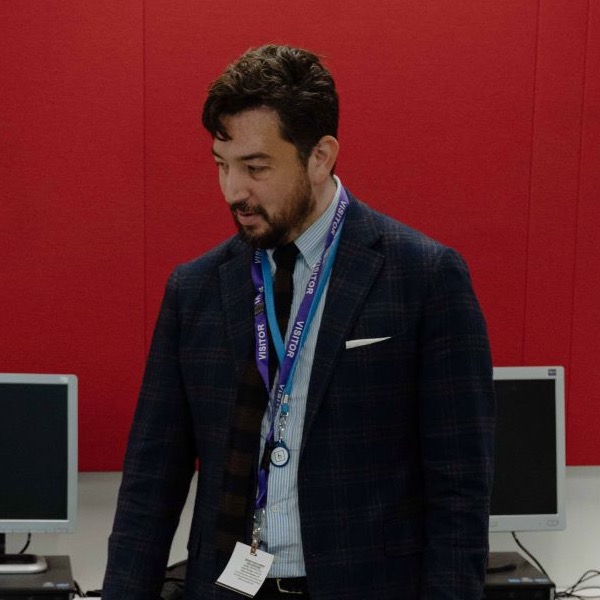
Omar Andrade Agile coach Boral
Storytelling for influence. A how-to guide to influential storytelling
Humans are story telling animals. And the best way to persuade and convince people is often through story. In this presentation, Omar Andrade explores the mindset and process for crafting influential stories. Mashing together design thinking, lean startup and classic storytelling structures to craft influential and simple stories that motivate people to action.
Using story prototypes to understand value and eliminate wasteful narratives that miss the mark, this session will get you thinking about how you approach influence in organisations.
Read More
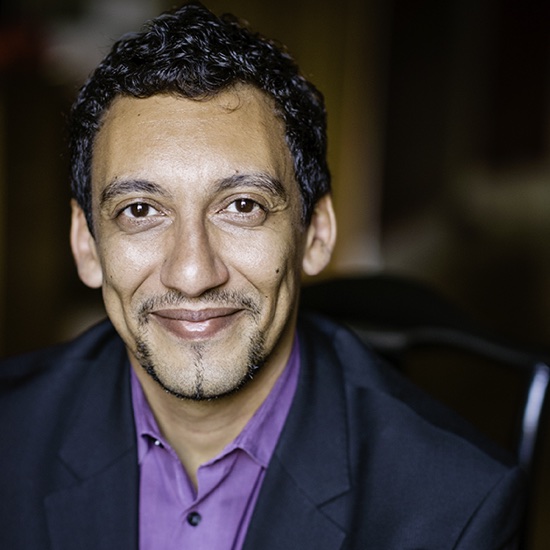
Peter Ikladious Director, Growth IBM
Igniting growth in product teams
Product teams in enterprises are focused on growth now more than ever, yet much of what we hear about growth is geared towards startups. Enterprises face unique challenges that require product teams to think differently in order to achieve growth at scale.
Peter Ikladious, Director of Growth, will share how he is able to drive growth at one of the world’s largest enterprise companies. In this session, you’ll learn how IBM uses data, design within product to ignite and ultimately sustain growth.
Read More

Nick Gower Co-founder Mentally Friendly
Growth through long term relationships
Nick will share a framework to help you define and measuring value in ways that inspires teams to differentiate, drive retention and build long term relationships.
Read More

Christian Baker VP Design & User Experience Local Measure
Done is just the beginning
Those of us that started out designing for print remember the feeling of relief when a job we had been working on for weeks or months came back from the printer. It was the sign that we could call that job done, celebrate our hard work and move onto the next thing. Now, as many of us have shifted to in-house product teams, the launch of a feature is just the beginning of endless iterations. It can be hard to get that feeling of closure. Teams can suffer from burnout or get stuck in a feature factory.
In this talk I want to explore some techniques teams and individuals can use to avoid or reduce the negative effects of the way we build products.
Read More
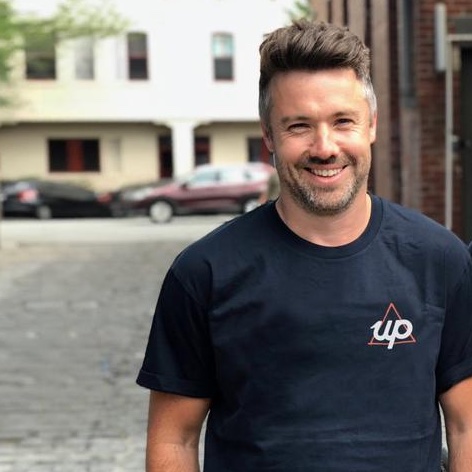
Anson Parker Head of Product Up Banking
The Tree of Up
Masterclass: How to be Clear: The Elements of Content Design with Jonathon Colman
On October 30, the day before Summit, spend a day with Jonathon Colman, content strategist extraordinaire.
Designing content is hard because writing for people is hard. And writing for mobile apps and experiences is even harder still. How do you find the right voice, develop effective principles and standards, and agree with people on what you mean when you say what you say?
This workshop gives you the tools and experiences you need to make content design easier, faster, better, and more manageable in your organization. You’ll leave with the knowledge and frameworks you need to scale your content design across all of your interactive products, websites, and other experiences as your organization grows.
What you’ll learn
Content doesn’t mean “write the words” any more than design means “make it pretty.” When you design content, you‘re creating an experience with words. That’s why this workshop covers:
- A complete, end-to-end process for approaching content design for websites and apps
- A process for discovering your organization’s core values—and use them to guide all of your content
- A model for designing content from high-level principles to standards all the way down to individual terms
- A way to conduct—and get the most out of—the design critique process so that you can iterate on your work and build strong teams
Who it’s for
This workshop is best for the people who make content happen in your organization: writers, designers, product managers, information architects, and marketers.
When and Where?
The workshop will take place from 9am to 5pm (registration from 8:30am)
The workshop will be held at the Adina Town Hall, 511 Kent Street, Sydney NSW 2000
Register now
Register for the workshop for just $695, or register for the workshop plus our Summit the following days and save $100s.
Register NowFind the conference pass for you |
Summit + Culture
|
Summit Silver
|
Summit Classic
|
Summit
|
|
|
|
Summit Videos
|
|
|
|
Culture Conference
|
|
||
Culture Videos
|
|
||
|
|
|
|
Find the conference pass for you
Summit + Culture
Summit
Summit video
Culture conference
Culture video
- $1,995 Standard
Summit Silver
Summit
Summit video
- $1,495 Standard
Summit Classic
Summit
- $1,395 Standard
Attend together
Teams get more
Send a team of five or more to Summit and get even more. Register with the code team and for just $1195 per team member, you'll each get:
- A Silver pass for each attendee
- A licence to the videos from Summit 2019
- And we'll give your team recognition at the event, on screen and from the stage.
But wait! If you sign up a team of 8 or more, you'll get all this plus:
- A complementary place at our Culture (taking place the day before Summit), ideal for team leaders.
All for the price of a classic ticket to the event. Remember just register with the code team.
Want to discuss more? Drop us a line at [email protected].
Huge Freelance, Startup and Not for Profit discounts
We strive to make our events as affordable as possible, and so have a limited number of specially priced tickets for Charitable Not For Profits, early stage (pre Round A) startups and freelancers.
If that's you, use the code nfp, startup or freelance to get a silver ticket for just $799.
Not sure if you qualify? Drop us a line, we try to be as generous as possible.
2-for-1 Pricing for Juniors
We know Junior developers and Designers aren't always the first to be sent to events like our conferences (our research shows the median experience of our attendees is around 7 years, so very far from junior.)
But we feel there's as much value for a junior developer or designer (and equally their employer) in attending our events as there is a more senior professional.
So, for 2019, we're doing something to make it easier for juniors to attend Web Directions Summit: Two-for-one pricing for juniors.
If you're keen to get your juniors inspired, excited, and up to date with the latest in their profession, just use the code 'junior' when you register them, and you'll get half price Silver tickets (so they'll get access to all the videos as well).
Our venue
Web Directions Summit 2019 returns to our longtime home, the International Convention Centre in Darling Harbour.
Getting there:
There are numerous public transport options, and parking available on site.
Accommodation:
If you're coming from out of town, there are many hotel and serviced apartment style accomodation options in Darling Harbour, and otherwise close by.
Partners
At Web Directions we work closely with partners to help make our events even better. Sponsor our coffee, reception, recharge station, or other valued activities and start or grow your relationship with our highly qualified audience.
Contact us for more on how we work can work with you to help you be even more awesome.
Key Partners
Meetup Muster
Our meetup muster showcases some of our favourite meetups across design and engineering. A chance for our audience to connect with the community, and for meetups to add to their audience.
Meetup Muster Partners

Praise for past Web Directions events

Web Directions is the must-attend event of the year for anyone serious about web development.
Phil Whitehouse,
Innovation Lead DigitasLBi

I’ve been admiring the Web Directions events for years, and was honored to be part… What a fantastic event!
Ethan Marcotte,
inventor "responsive Web design"

Out of any conference, Web Directions is far and away our favourite
Dave Greiner,
founder Campaign Monitor
About Us
Co-founded and now run by John Allsopp, Web Directions has for nearly 20 years brought together leading developers, engineers, visual, IxD, UX and product designers, Art and Creative Directors, product managers indeed everyone involved in producing web and digital products to learn from one another, and the World's leading experts across this vast field.
We spend our lives thinking about what comes next, keeping up with trends in technology, practices and processes, and filtering the hype, to make sure you don't miss trends that matter, and don't waste time on hype that doesn't.
We promise attending one of our events will leave you significantly better versed in the challenges you face day to day, and in solutions for addressing them.

John Allsopp
John Allsopp has been working on the Web for nearly 30 years. He's been responsible for innovative developer tools such as Style Master, X-Ray and many more. He's spoken at numerous conferences around the World and delivered dozens of workshops in that time as well.
His writing includes two books, including Developing With Web Standards and countless articles and tutorials in print and online publications.
His "A Dao of Web Design" published in 2000 is cited by Ethan Marcotte as a key influence in the development of Responsive Web Design, who's acclaimed article in 2010 begins by quoting John in detail, and by Jeremy Keith as "a manifesto for anyone working on the Web".
Code of Conduct
For over a decade, we've worked hard to create inclusive, fun, inspring and safe events for the Web Industry.
As part of our commitment to these values, we've adopted a code of conduct for all involved: ourselves, our speakers, our partners and our audience.
If you have any concern or feedback, please don't hesitate to contact us.